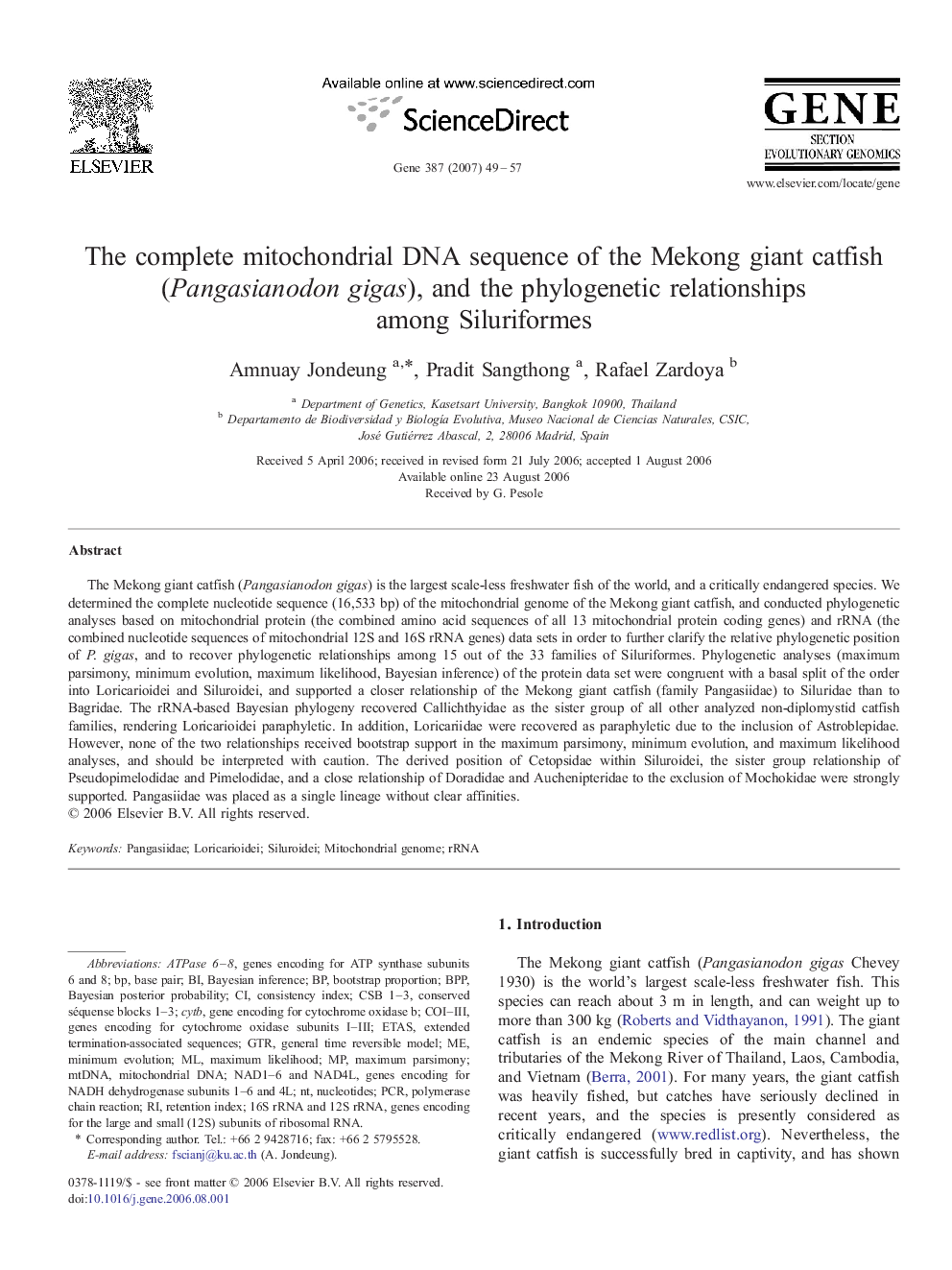| Article ID | Journal | Published Year | Pages | File Type |
|---|---|---|---|---|
| 2819914 | Gene | 2007 | 9 Pages |
The Mekong giant catfish (Pangasianodon gigas) is the largest scale-less freshwater fish of the world, and a critically endangered species. We determined the complete nucleotide sequence (16,533 bp) of the mitochondrial genome of the Mekong giant catfish, and conducted phylogenetic analyses based on mitochondrial protein (the combined amino acid sequences of all 13 mitochondrial protein coding genes) and rRNA (the combined nucleotide sequences of mitochondrial 12S and 16S rRNA genes) data sets in order to further clarify the relative phylogenetic position of P. gigas, and to recover phylogenetic relationships among 15 out of the 33 families of Siluriformes. Phylogenetic analyses (maximum parsimony, minimum evolution, maximum likelihood, Bayesian inference) of the protein data set were congruent with a basal split of the order into Loricarioidei and Siluroidei, and supported a closer relationship of the Mekong giant catfish (family Pangasiidae) to Siluridae than to Bagridae. The rRNA-based Bayesian phylogeny recovered Callichthyidae as the sister group of all other analyzed non-diplomystid catfish families, rendering Loricarioidei paraphyletic. In addition, Loricariidae were recovered as paraphyletic due to the inclusion of Astroblepidae. However, none of the two relationships received bootstrap support in the maximum parsimony, minimum evolution, and maximum likelihood analyses, and should be interpreted with caution. The derived position of Cetopsidae within Siluroidei, the sister group relationship of Pseudopimelodidae and Pimelodidae, and a close relationship of Doradidae and Auchenipteridae to the exclusion of Mochokidae were strongly supported. Pangasiidae was placed as a single lineage without clear affinities.
